| Article ID | Journal | Published Year | Pages | File Type |
|---|---|---|---|---|
| 4269796 | The Journal of Sexual Medicine | 2014 | 7 Pages |
IntroductionOrgasmic dysfunction (OD) is defined as the inability to achieve an orgasm, markedly diminished intensity of orgasmic sensations, or marked delay of orgasm during any kind of sexual stimulation. OD definition and method of diagnosis vary widely across studies.AimThe aim of this study was to identify the prevalence and risk factors that predispose Mexican women to OD.MethodsA representative sample of women from Mexico City was surveyed using an online website. Women between 18 to 40 years old were selected, and the orgasm domain from the Female Sexual Function Index was used to identify OD. A cutoff point was calculated using a construct with a histogram and calculated median. A univariate and multivariate analysis was conducted to examine the relationship between potential risk factors and sexual function.Main Outcome MeasuresOD prevalence; significant risk factors on multivariate analysis.ResultsOD prevalence was 18.3%. Univariate analysis showed younger age (P = 0.01), lower degree of education (P = 0.02), single marital status (P = 0.038), and dissatisfaction with the thickness and/or size of partner's penis (P = 0.01) as significant variables related to OD. In multivariate analysis, younger age (P = 0.01) and dissatisfaction with the thickness/size of partner's penis (hazard ratio 3.04, P = 0.01) remained significant.ConclusionOD is a prevalent alteration in young women. Marital status, education, and dissatisfaction with thickness/size of partner's penis are definitely related variables. Villeda Sandoval CI, Calao-Pérez M, Enríquez González AB, Gonzalez-Cuenca E, Ibarra-Saavedra R, Sotomayor M, and Castillejos Molina RA. Orgasmic dysfunction: Prevalence and risk factors from a cohort of young females in Mexico. J Sex Med 2014;11:1505–1511.
